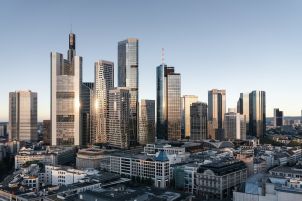The process of building a city is one that is never finished. With a number of actors involved in new developments and a constant stream of schemes and initiatives that target different segments of the population, any given city is in a constant state of evolution.
How then can we construct a city that works for its inhabitants? Is it even possible to offer infrastructure and services that cater for everyone? In order to get answers to some of these questions we spoke to Kate Jeffery, Professor of Behavioural Neuroscience at University College London and Victoria Lee, Urban Development Strategist.
Constructing our cities with the human in mind
“On big projects, there are competing demands, whether that’s from the investor, developer or local authority,” says Victoria Lee. “On top of that there are national and local policy demands and then of course physical constraints in terms of design. Add in the socioeconomic factors which result in a lot of competing factors that make up one project. Can cities be designed to deliver something for everyone? I think that it’s possible but we have to think about balance. Not just the balance of people or money, but balancing the extent to which design and governance play a role.”
Whilst different development projects in cities are subject to decision-making processes, and a number of parties being involved, Kate Jeffery is keen to stress that we’re often overlooking one essential criteria; how the human brain functions in different spaces. As she points out, “I think understanding how the brain organises spatial information should be incorporated into architecture. Indeed, the tools we use in science could be very useful in architecture. Finding out how people use space, how they feel within it and if it functions in the way they expect are all important elements to consider for a building.”


We need to gather greater amounts of data about our cities, and particularly data that relates to sentiment. It’s not only about empowering the land developer; you’re also empowering local people. Engagement gives a real voice to the population and this is achieved through asking the right questions.
Can our cities be more data driven?
The problem that those involved with city design and planning often have is that there is not enough analysis carried out on how people both feel and interact within different spaces. When we consider the sheer numbers of those moving around in a city, it is easy to understand that this is not a simple task. Lee and Jeffery however both advocate for compiling more data related to people’s reactions in buildings.
Victoria Lee points out that, “We need to gather greater amounts of data about our cities, and particularly data that relates to sentiment. It’s not only about empowering the land developer; you’re also empowering local people. Engagement gives a real voice to the population and this is achieved through asking the right questions.”
From a neuroscience point of view, Kate Jeffery is keen to mention that cities bring together a wide mix of people and therefore not everyone’s needs will be the same. As she explains, “I think the key to really understanding people and their relationship with a city is by collecting more data. This would be done by looking at cities and assessing what works for people and what doesn’t. I don’t think there’s a one-size-fits-all answer to this and it’s important to recognise that there’s a lot of individual variation. Some people like wide open spaces, some feel uneasy in them and prefer cosy spaces. Some people like to walk, some hate to walk. Some people like light, some like darkness.” There are clearly many variables involved in the collection of data but as cities are places that rely on human activity, it seems only natural that we understand human behaviour and sentiment on a greater scale.
Building truly inclusive spaces
Sentiment also plays a significant role in how comfortable people feel in a space and this is what can define the labelling of certain areas in a city as ‘unsafe’. Kate Jeffery clarifies this point by saying, “The brain establishes a map of the city and then works out which things happen in different parts of the map. Which areas are dangerous, which are by the river, where can I go to get food? These are all established by physical location and the experiences that you’ve had in these areas. We’re constantly processing the layout, forming memories and learning, in order to build up this very rich internal representation. I have this belief that if you aren’t able to form a good mental representation of the layout of a city, you don’t feel fully comfortable.”
The design and structure of a city is therefore crucial to how people feel within it. Design however can also isolate segments of the population, for example spaces that you have to pay to access. As Victoria Lee confirms, “It’s about this balance between the level of design and the level of governance of a space. I think some cities are edging towards overdesign and over-governance, which means diverse communities from different socioeconomic backgrounds can feel designed out of those spaces.”

I think understanding how the brain organises spatial information should be incorporated into architecture. Indeed, the tools we use in science could be very useful in architecture. Finding out how people use space, how they feel within it and if it functions in the way they expect are all important elements to consider for a building
The Covid-19 effect
When it comes to talking about the Covid-19 pandemic, Jeffery and Lee have slightly differing ideas on how cities will adapt to this significant health crisis.
For Victoria Lee, it’s about opening up our cities and adapting to a new relationship with time. As she explains, “In terms of urban development, Covid-19 will add time to the urban development equation. Cities that are constrained in space will learn to use time more effectively. This means 24-hour cities, with certain activities carried out at very different times of the day. If you can shop in the supermarket at 11 or 12pm, you are socially distancing from the people shopping at 10am. The economy can continue because you are able to provide jobs for people in the night and in the day. The future of work becomes different. It’s a design component that I think will become a lot more prevalent in city design.”
For Kate Jeffery the focus will be more about risk and the boundaries people impose on themselves. “People weigh up all sorts of factors, are they comfortable going to the beach? What about a rugby game? Whilst some people prefer to stay at home. People like to have a choice and they’re frustrated if the choice is taken away from them,” she says. “We really want to have an environment where people can do the things they want to do while being mindful of the risk of transmission. I think engineers are going to have a big part to play in making sure we have a safe world, but we need to recognise that we’re a social species so we need to accommodate that somehow.”





